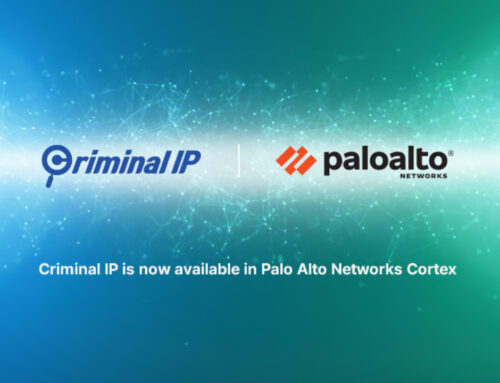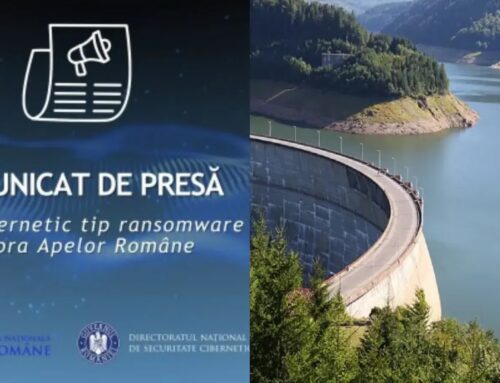
SafePay Ransomware Leverages RDP and VPN for Intruding Into Organizations Network
SafePay Ransomware: Unmasking the RDP and VPN Threat
The digital landscape is a constant battlefield, with new threats emerging and evolving with alarming frequency. One such formidable adversary is SafePay Ransomware, a sophisticated threat leveraging common organizational tools—Remote Desktop Protocol (RDP) and Virtual Private Networks (VPNs)—to infiltrate and cripple networks. This article delves into the mechanics of SafePay Ransomware, outlines its attack vectors, and provides actionable remediation strategies to safeguard your organization.
Table of Contents
- What is SafePay Ransomware?
- How SafePay Exploits RDP and VPN
- The Attack Lifecycle of SafePay Ransomware
- Identifying and Detecting SafePay Presence
- Robust Remediation and Prevention Strategies
- Essential Tools for Defense Against Ransomware
- Key Takeaways for Organizational Security
What is SafePay Ransomware?
SafePay is a relatively new entrant into the ransomware families, distinguished by its opportunistic exploitation of commonly used remote access services: RDP and VPNs. Unlike some ransomware strains that rely heavily on phishing campaigns or software vulnerabilities, SafePay primarily leverages compromised credentials or weakly secured remote access points. Once inside, it encrypts critical data, demanding a ransom payment, often in cryptocurrency, for decryption.
This particular ransomware highlights a shift in attacker methodologies, focusing less on zero-day exploits and more on misconfigurations and human vulnerabilities within existing infrastructure. Organizations often prioritize the convenience and flexibility offered by RDP and VPNs without adequately securing them, unintentionally creating open doors for threats like SafePay.
How SafePay Exploits RDP and VPN
The core of SafePay’s success lies in its ability to weaponize legitimate remote access tools. Here’s how it typically operates:
Compromised RDP Credentials
Attackers often gain access to RDP credentials through several means:
- Brute-force attacks: Weak or common passwords on RDP exposed to the internet are highly susceptible.
- Credential stuffing: Using username/password combinations leaked from other breaches.
- Phishing: Tricking employees into revealing their RDP login details.
- Purchasing credentials: Cybercriminals often sell compromised RDP access on dark web forums.
Once RDP access is established, the attacker gains direct control over the compromised system, allowing them to move laterally within the network.
Exploiting VPN Vulnerabilities or Weaknesses
VPNs, designed to secure remote connectivity, can become an Achilles’ heel if not properly configured or patched. SafePay actors may target:
- Unpatched VPN vulnerabilities: Exploiting known software flaws in VPN appliances or client software. For example, older vulnerabilities like those affecting Pulse Secure VPN (e.g., CVE-2019-11510) or Fortinet FortiGate (e.g., CVE-2018-13379) could be leveraged if not remediated. Attackers scan for these unpatched systems to gain initial access.
- Weak VPN credentials: Similar to RDP, easily guessable or compromised VPN credentials can provide an entry point.
- Lack of Multi-Factor Authentication (MFA): Without MFA, even if a password is stolen, the attacker can still gain access, making it a critical vulnerability.
The VPN acts as a direct tunnel into the corporate network, bypassing perimeter defenses once compromised.
The Attack Lifecycle of SafePay Ransomware
Understanding the stages of a SafePay attack is crucial for effective defense:
- Initial Access: As discussed, this is primarily through compromised RDP or VPN access, often secured by weak credentials or unpatched vulnerabilities.
- Reconnaissance and Lateral Movement: Once inside, attackers don’t immediately deploy ransomware. They spend time mapping the network, identifying valuable assets, administrative credentials, and backup systems. They use tools like Mimikatz or BloodHound for credential harvesting and network enumeration.
- Privilege Escalation: Gaining higher-level privileges (e.g., administrator or domain administrator) is a key objective to ensure widespread access and the ability to disable security controls.
- Persistence: Establishing backdoors or creating new user accounts to maintain access even if the initial entry point is closed.
- Data Exfiltration (Optional but Increasingly Common): Before encryption, some ransomware groups (including those potentially leveraging SafePay) may exfiltrate sensitive data, adding an extortion layer (double extortion) where they threaten to leak the data if the ransom isn’t paid.
- Deployment and Encryption: The ransomware executable is deployed across the network, encrypting files on all accessible systems, including shared drives and cloud storage if mapped.
- Ransom Demand: A ransom note appears, detailing payment instructions and a threat of permanent data loss or data leak if the demands are not met.
Identifying and Detecting SafePay Presence
Early detection is paramount. Look for these indicators:
- Unusual RDP/VPN Login Attempts: Numerous failed login attempts, logins from unusual geographical locations, or during off-hours.
- New User Accounts: Unauthorized user accounts or changes to existing user privileges.
- Suspicious Network Traffic: Unusual outbound traffic, especially to unknown IP addresses or cloud storage services (indicating data exfiltration).
- Process Anomalies: Unexpected processes running with high privileges, or security tools being disabled.
- File Renaming/Deletion: Sudden bulk renaming of files with strange extensions, especially if accompanied by a ransom note.
- Log Abnormalities: Cleared event logs, failed login attempts on critical systems, or unusual administrative commands.
Robust Remediation and Prevention Strategies
Proactive prevention and rapid response are your best defense.
Immediate Remediation Actions (Post-Infection)
- Isolate Infected Systems: Disconnect affected devices from the network immediately to prevent further spread.
- Identify the Initial Access Vector: Determine how the attackers got in (compromised RDP, VPN, or other means).
- Secure Critical Accounts: Reset passwords for all potentially compromised accounts, especially administrator accounts. Implement MFA immediately where not present.
- Engage Incident Response: If you have an IR plan, activate it. Consider external cybersecurity experts if internal resources are limited.
- Analyze Ransomware Strain: Try to identify the specific SafePay variant. This can help with potential decryption tools if any become available (though rare for new strains).
- Restore from Clean Backups: The most reliable way to recover. Ensure backups are isolated, recent, and tested.
- Forensic Analysis: Collect logs and system images for analysis to understand the attack’s scope and tactics.
Proactive Prevention Measures (Before an Attack)
- Strong Password Policies & MFA: Enforce complex, unique passwords for all accounts, especially those with remote access. Implement MFA across all RDP, VPN, and critical systems.
- Patch Management: Regularly update and patch all software, operating systems, and network devices, especially VPN appliances. Prioritize patches for known vulnerabilities (e.g., CVEs like those mentioned for Pulse Secure or Fortinet).
- Least Privilege Principle: Grant users and systems only the minimum necessary access rights.
- Network Segmentation: Divide your network into isolated segments. This limits lateral movement even if one segment is compromised.
- RDP Hardening:
- Do not expose RDP directly to the internet. Use a VPN or a secure gateway (like an RDP gateway) for access.
- Limit RDP access to specific IP addresses.
- Enable Network Level Authentication (NLA).
- Monitor RDP logs for unusual activity.
- VPN Security:
- Keep VPN software and appliances updated.
- Enable strong encryption protocols.
- Implement granular access controls for VPN users.
- Routinely audit VPN access logs.
- Regular Backups: Implement a robust 3-2-1 backup strategy (3 copies of data, on 2 different media, with 1 copy offsite/offline). Test your backups regularly.
- Endpoint Detection and Response (EDR): Deploy EDR solutions for real-time monitoring, detection, and response to malicious activities on endpoints.
- Security Awareness Training: Educate employees about phishing, social engineering, and the importance of strong security practices.
- Privileged Access Management (PAM): Solutions to manage and secure privileged accounts, reducing the risk of credential theft.
Essential Tools for Defense Against Ransomware
A multi-layered defense strategy requires a suite of robust security tools.
| Tool Category | Example Tools | Function/Benefit |
|---|---|---|
| Multi-Factor Authentication (MFA) | Okta, Duo Security, Microsoft Authenticator, Google Authenticator | Adds an extra layer of security beyond passwords, especially crucial for RDP/VPN. |
| Endpoint Detection & Response (EDR) / Next-Gen Antivirus (NGAV) | CrowdStrike Falcon, SentinelOne, Microsoft Defender for Endpoint, Trend Micro Apex One | Detects and prevents malicious activity on endpoints, including ransomware execution. |
| Vulnerability Management / Patch Management | Tenable Nessus, Qualys, Microsoft SCCM/WSUS, ManageEngine Patch Manager Plus | Identifies and remediates system vulnerabilities, including unpatched VPN flaws. |
| Privileged Access Management (PAM) | CyberArk, BeyondTrust, Thycotic Secret Server | Manages and secures administrative credentials, preventing their compromise. |
| Security Information and Event Management (SIEM) | Splunk, IBM QRadar, Microsoft Azure Sentinel, LogRhythm | Collects and analyzes security logs from across the network for threat detection. |
| Backup and Disaster Recovery Solutions | Veeam, Acronis, Rubrik, Cohesity | Enables rapid recovery of data after an encryption event. |
| Network Access Control (NAC) | Cisco Identity Services Engine (ISE), Forescout CounterACT | Enforces security policies for devices attempting to access the network. |
Key Takeaways for Organizational Security
SafePay ransomware is a stark reminder that even everyday IT tools can become weapons in the hands of malicious actors if not rigorously secured. The escalating threat posed by ransomware, particularly those exploiting established access methods like RDP and VPNs, necessitates a proactive and layered defense strategy. Organizations must move beyond basic security hygiene to embrace comprehensive controls including strong authentication, diligent patching, network segmentation, robust backups, and continuous monitoring.
Vigilance, combined with the right tools and an educated workforce, forms the strongest bulwark against the persistent and evolving threat of ransomware. Don’t wait for an incident to occur; strengthen your defenses today.
“`





